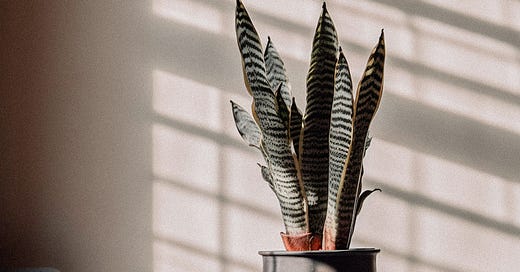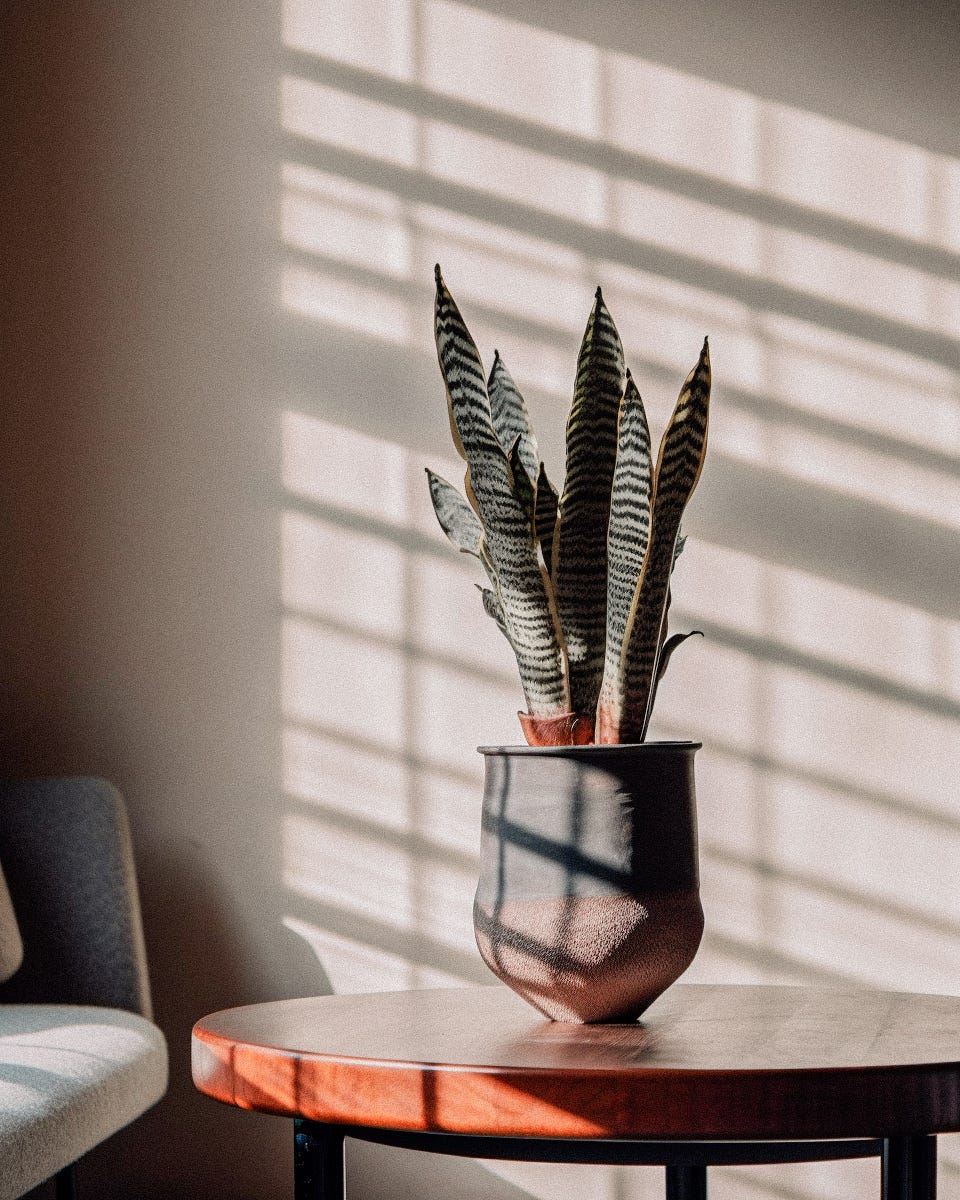Jump to Section:
Family | Genus | Description | Care Level | Soil | Light | Temperature | Water | Humidity | Fertiliser | Repotting | Pruning | Propagation | Toxicity
Family
Bromeliaceae
Genus
The Aechmea genus is a group of flowering plants that belong to the Bromeliaceae family, commonly known as bromeliads. Aechmea comprises approximately 250 species characterised by their distinctive rosette-like growth form and vividly coloured bracts and flowers. This genus is native to the tropical and subtropical regions of Central and South America, with some species also found in the West Indies.
Aechmea plants are typically epiphytic or terrestrial, with some species being saxicolous, meaning they grow on rocks. They are characterised by their rosette-like growth form, which often forms a central tank, a water and nutrient storage structure.
The leaves of Aechmea plants are spirally arranged and often form a dense rosette. They can be linear, lanceolate, or strap-shaped, with serrated margins with spines or smooth edges. The leaves are generally stiff, leathery, and covered with scales or trichomes, which help to absorb water and nutrients.
The inflorescence of Aechmea plants is a terminal spike, panicle, or raceme, arising from the centre of the rosette. The inflorescence is usually composed of colourful bracts that protect the flowers and attract pollinators.
Aechmea plants are known for their showy and brightly coloured bracts surrounding the inflorescence. Bract colours range from red, pink, purple, blue, and orange to yellow, and they can be persistent, meaning they remain on the plant after the flowers have faded.
Aechmea flowers are typically tubular or funnel-shaped and are usually zygomorphic, meaning they have bilateral symmetry. The flowers can be sessile or pedicellate and are often subtended by small bracteole. The corolla has three fused petals, while the calyx has three sepals. The colours of the flowers are often complementary to the bracts, ranging from white, yellow, pink, red, blue, or purple.
The reproductive structures of Aechmea plants include six stamens with basifixed anthers and a single pistil with a three-chambered ovary. The style is slender and bears a trifid stigma.
Aechmea plants' fruits' are berries containing numerous small, usually ovoid or elongated seeds. The seeds are often surrounded by a mucilaginous substance, which aids dispersal by attaching to birds or other animals.
Aechmea plants are adapted to various habitats, including rainforests, cloud forests, and dry or rocky areas. Hummingbirds, bees, and other insects primarily pollinate them. The epiphytic species of Aechmea often rely on the tank created by their leaf rosettes to store water and nutrients. In contrast, terrestrial species can absorb water and nutrients through their roots.
Many Aechmea species are cultivated as ornamental plants due to their striking foliage and inflorescences. They are relatively low-maintenance, requiring well-draining soil or growing media, indirect sunlight, and consistent humidity. Most species can be propagated by offsets or pups, which can be removed and planted separately to create new plants.
Several Aechmea species are threatened or endangered due to habitat loss, deforestation, and over-collection for the horticultural trade. Conservation efforts for these plants include habitat protection, sustainable cultivation practices, and ex-situ conservation in botanical gardens and seed banks.
Description
Aechmea chantinii is an epiphytic plant with a rosette-like growth form. The plant can grow to a height of 18 to 36 inches (45 to 90 cm) with a similar spread, depending on its growing conditions.
The leaves of Aechmea chantinii are arranged in a spiral rosette, creating a central tank for water and nutrient storage. The leaves are linear to lanceolate, measuring 12 to 24 inches (30 to 60 cm) in length and 1.5 to 3 inches (4 to 8 cm) in width. The leaf margins are serrated with small, dark spines. The leaf surface is dark green with distinctive silver horizontal bands, giving it the common name "Amazonian Zebra Plant."
The inflorescence of Aechmea chantinii is a terminal spike or raceme arising from the centre of the rosette. It can reach 12 to 24 inches (30 to 60 cm), with an erect or slightly arching habit. The inflorescence comprises red to pink bracts, which protect the flowers and attract pollinators.
The bracts of Aechmea chantinii are red to pink, sometimes with a hint of orange, and are arranged spirally around the inflorescence. They are typically lanceolate, with a leathery texture, and may persist on the plant after the flowers have faded.
The flowers of Aechmea chantinii are tubular or funnel-shaped, with a zygomorphic symmetry. The flowers are sessile or short-pedicellate and subtended by small, inconspicuous bracteoles. They are usually 1 to 2 inches (2.5 to 5 cm) long, with three fused blue or white petals and three green to brown sepals.
Aechmea chantinii has six stamens with basifixed anthers and a single pistil with a three-chambered ovary. The slender style ends in a trifid stigma.
Following pollination, Aechmea chantinii produces small, round berries that contain numerous ovoid or elongated seeds. The seeds are surrounded by a mucilaginous substance that facilitates seed dispersal by adhering to birds or other animals.
Care Level
Caring for an Aechmea chantinii is relatively easy, making it an excellent choice for experienced and novice gardeners. As an epiphytic plant, it has specific but manageable requirements.
Soil
Aechmea chantinii, like other bromeliads, is an epiphytic plant and requires a well-draining, aerated potting mix rather than traditional soil. The ideal potting combination for Aechmea chantinii should mimic its natural habitat, which grows on trees and absorbs moisture and nutrients from the surrounding air and debris. Here's a detailed description of the components and options for creating the right potting mix for Aechmea chantinii:
Keep reading with a 7-day free trial
Subscribe to Rooty Nook to keep reading this post and get 7 days of free access to the full post archives.




